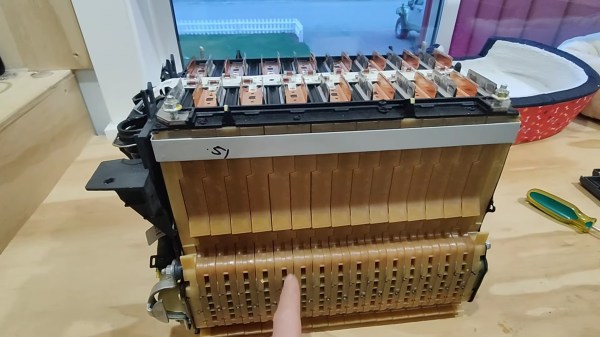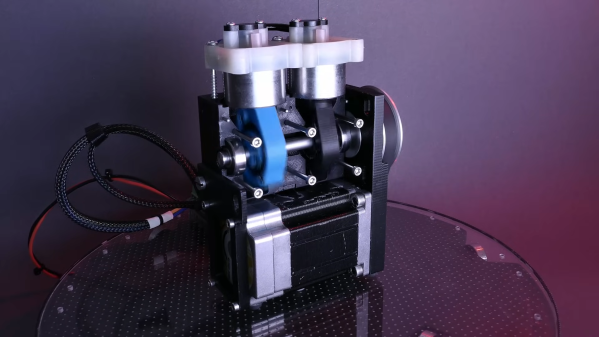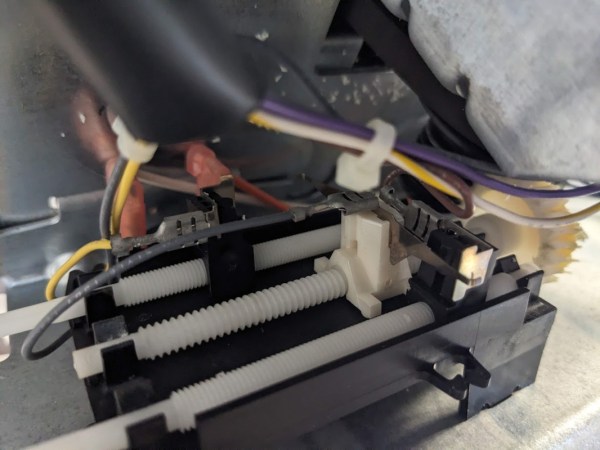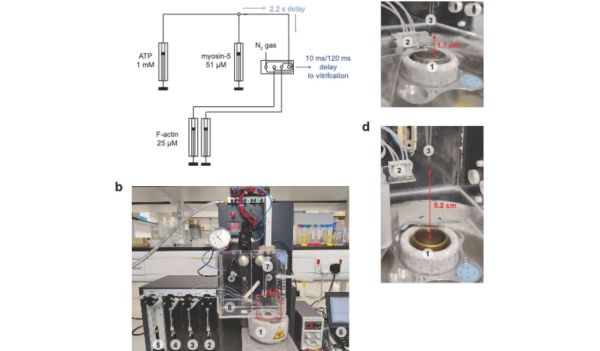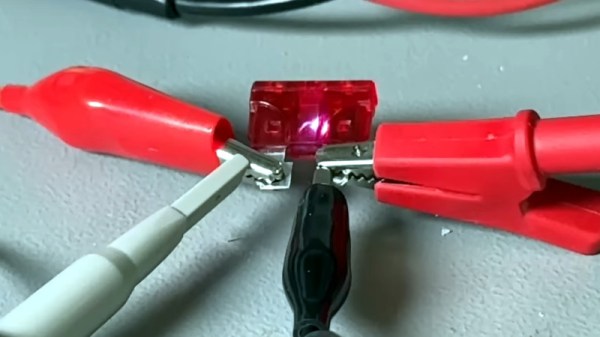Some projects we cover are simple, while some descend into the sort of obsessive, rabbit-hole-digging-into-wonderland madness that hackers everywhere will recognize. That’s precisely where [Excessive Overload] has gone with the AimBot V3, a target-tracking BB-gun that uses three cameras, two industrial servos, and an indeterminate amount of computing power to track objects and fire up to 40 BB gun pellets a second at them.
The whole project is overkill, made of CNC-machined metal, epoxy-cast gears, and a chain-driven pan-tilt system that looks like it would take off a finger or two before you even get to the shooty bit. That’s driven by input from the three cameras: a wide-angle one that finds the target and a stereo pair that zooms in on the target and determines the distance from the gun, using several hundred frames per second of video. This is then used to aim the BB gun stock, a Polarstar mechanism that fires up to 40 pellets a second. That’s fed by a customized feeder that uses spring wire.
The whole thing comes together to form a huge gun that will automatically track the target. It even uses motion tracking to discern between a static object like a person and a dart fired by a toy gun, picking the dart out of the air at least some of the time.
The downside is that it only works on targets with a retroreflective patch: it includes a 15 watt IR LED on the front of the gun. The camera detects the bright reflection and uses it to track the target, so all you have to do to avoid this particular Terminator is make sure you aren’t wearing anything too shiny.
Continue reading “The Aimbot V3 Aims To Track & Terminate You”


